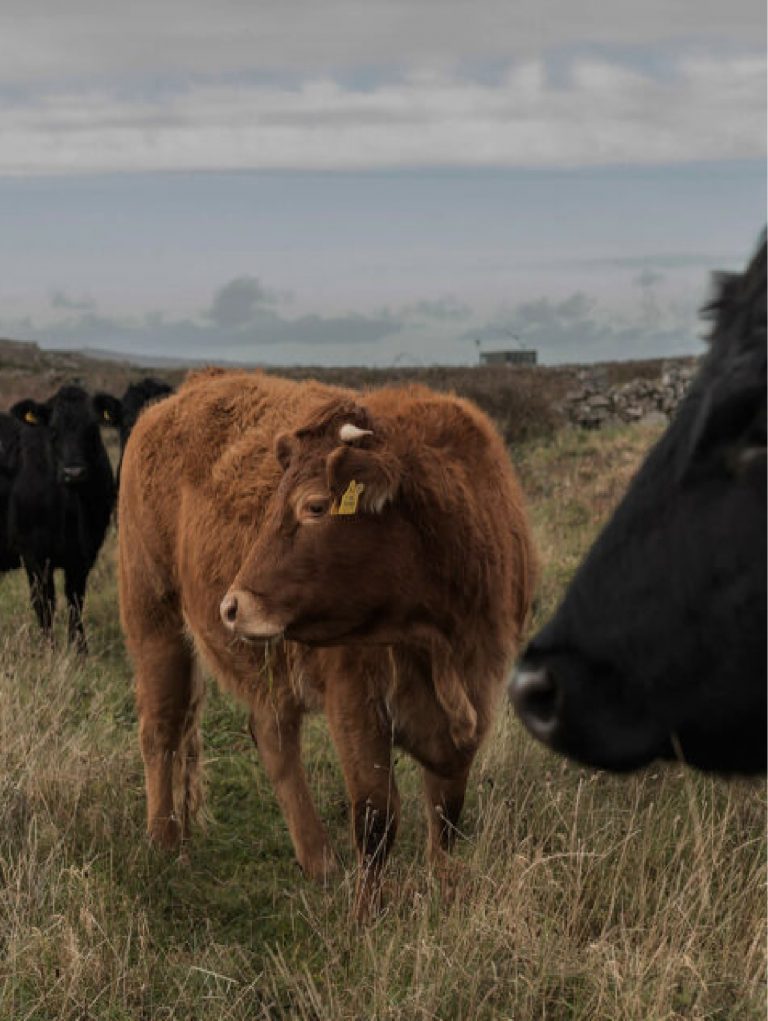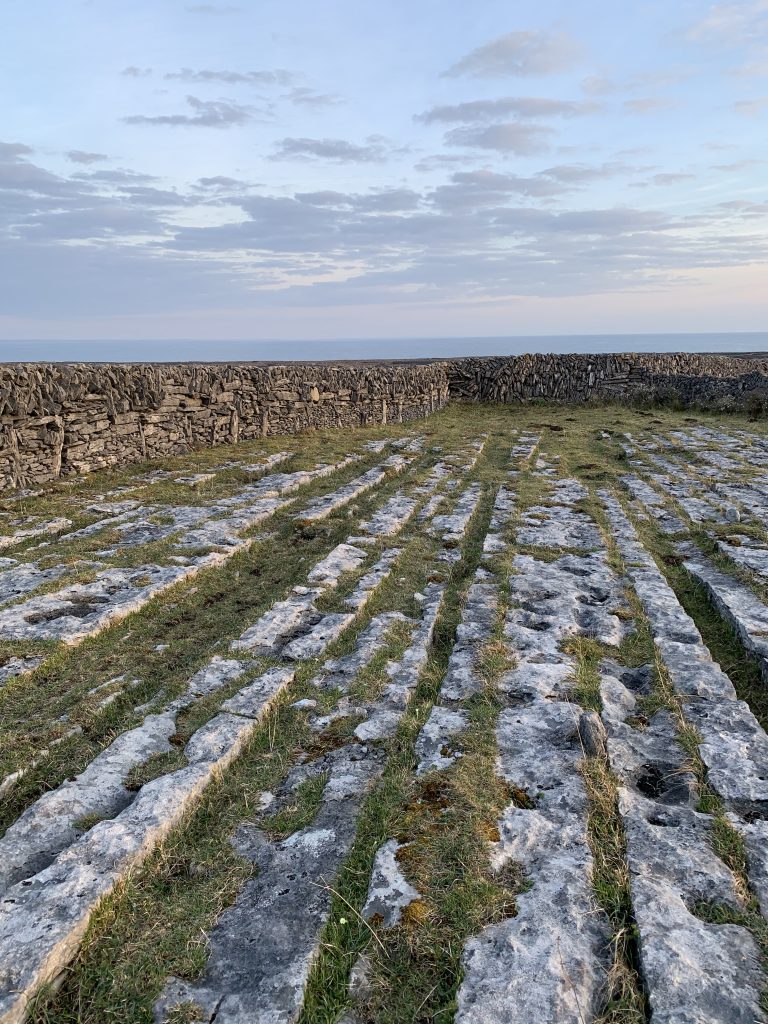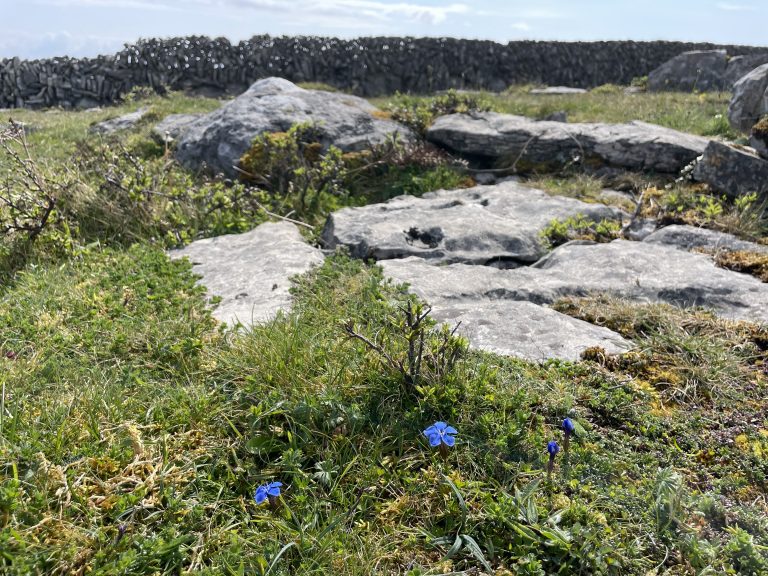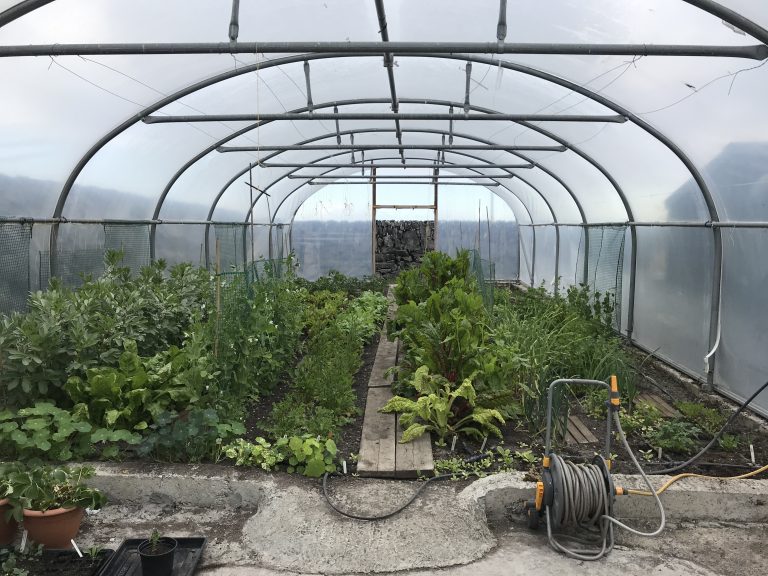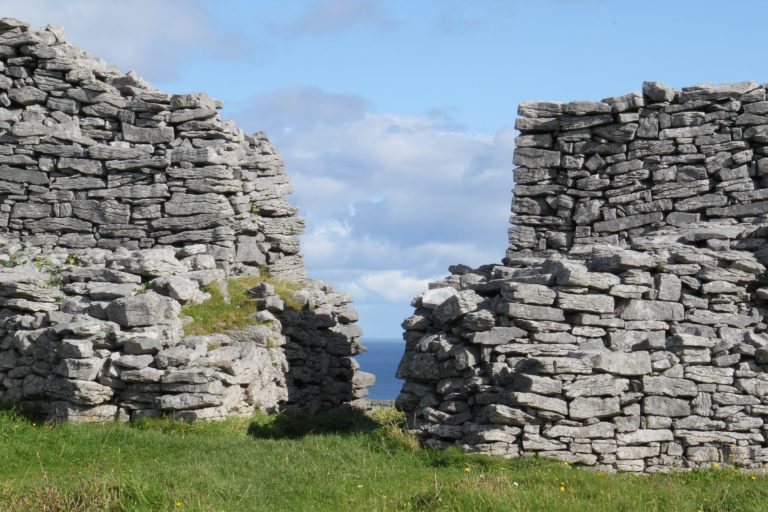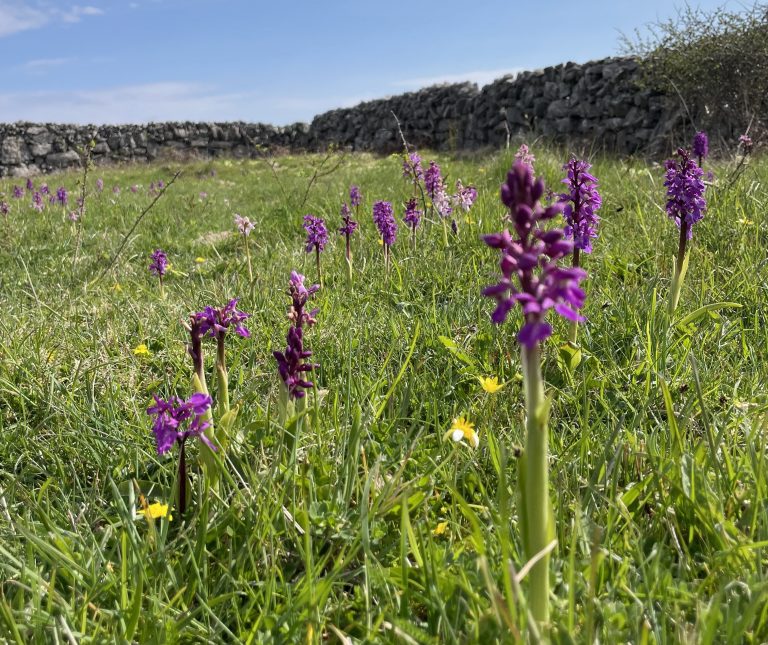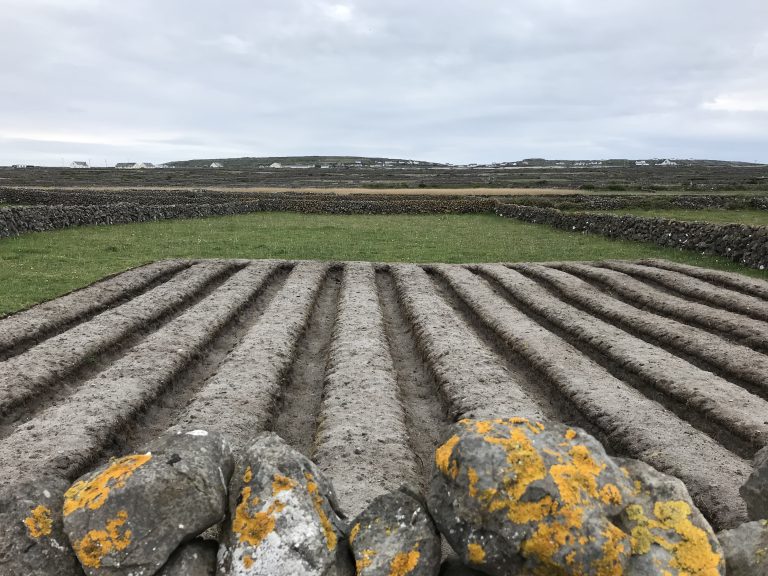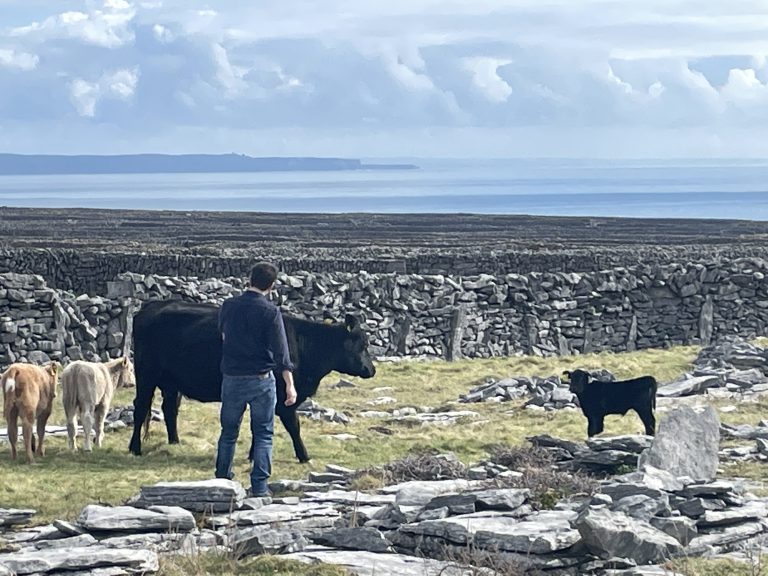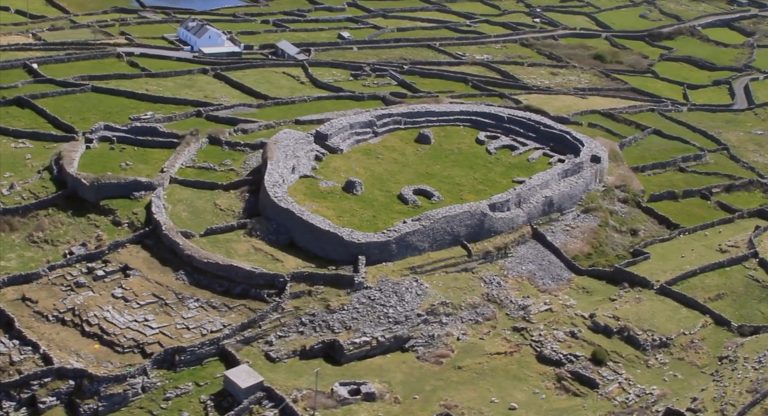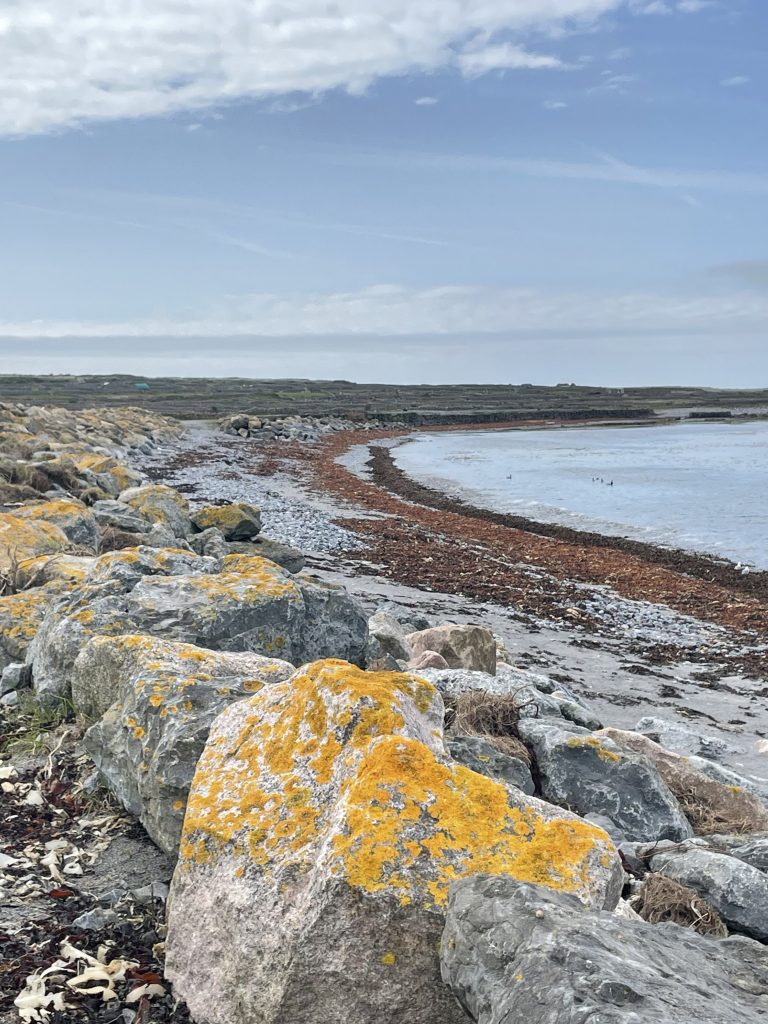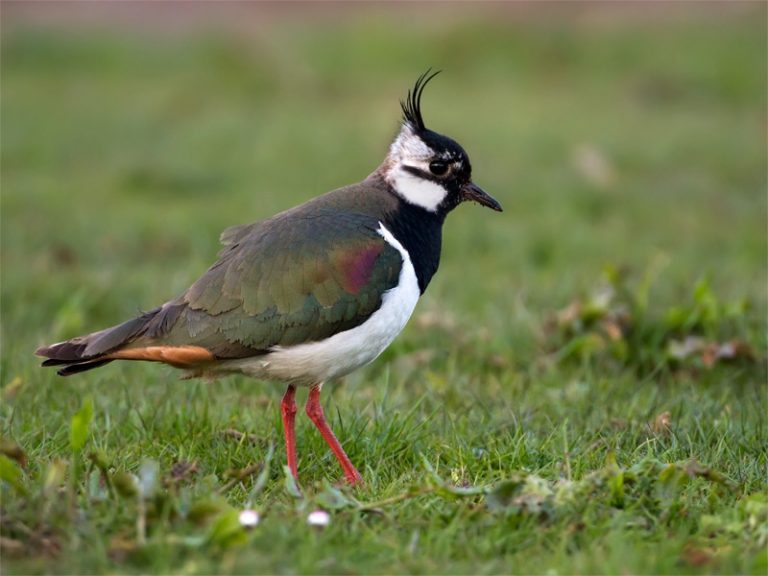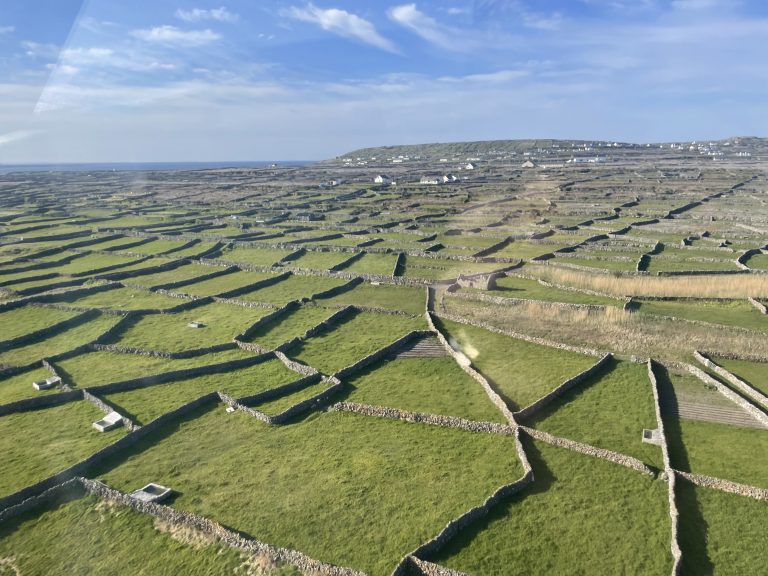The Ecology Study of our Island Farm completed over 12 months by pre-eminent botanist friends, Roger and Olivia Goodwillie, is available to Island Stay guests. It details all the flora, fauna, geological and cultural treasures to be found throughout our special Burren Landscape Estate.
Our Island Farm Estate stretches over 5km from the north to the south coast of the island in a serious of separate parcels of fields, including all of the various terrains of the island along the way. The island land was originally divided in strips along its north-south axis which were then subsequently subdivided into little broken chain parcels of land along the strip.
The reason for this kind of division of land, was that each change of terrain on the island from north to south fulfils a different requirement for the farmer. From seaweed rights on the north shore for fertiliser and more, to the fields around the homestead for calving, to barely accessible winterage to the south of the island, used for winter grazing when the cattle would have no shortage of water.
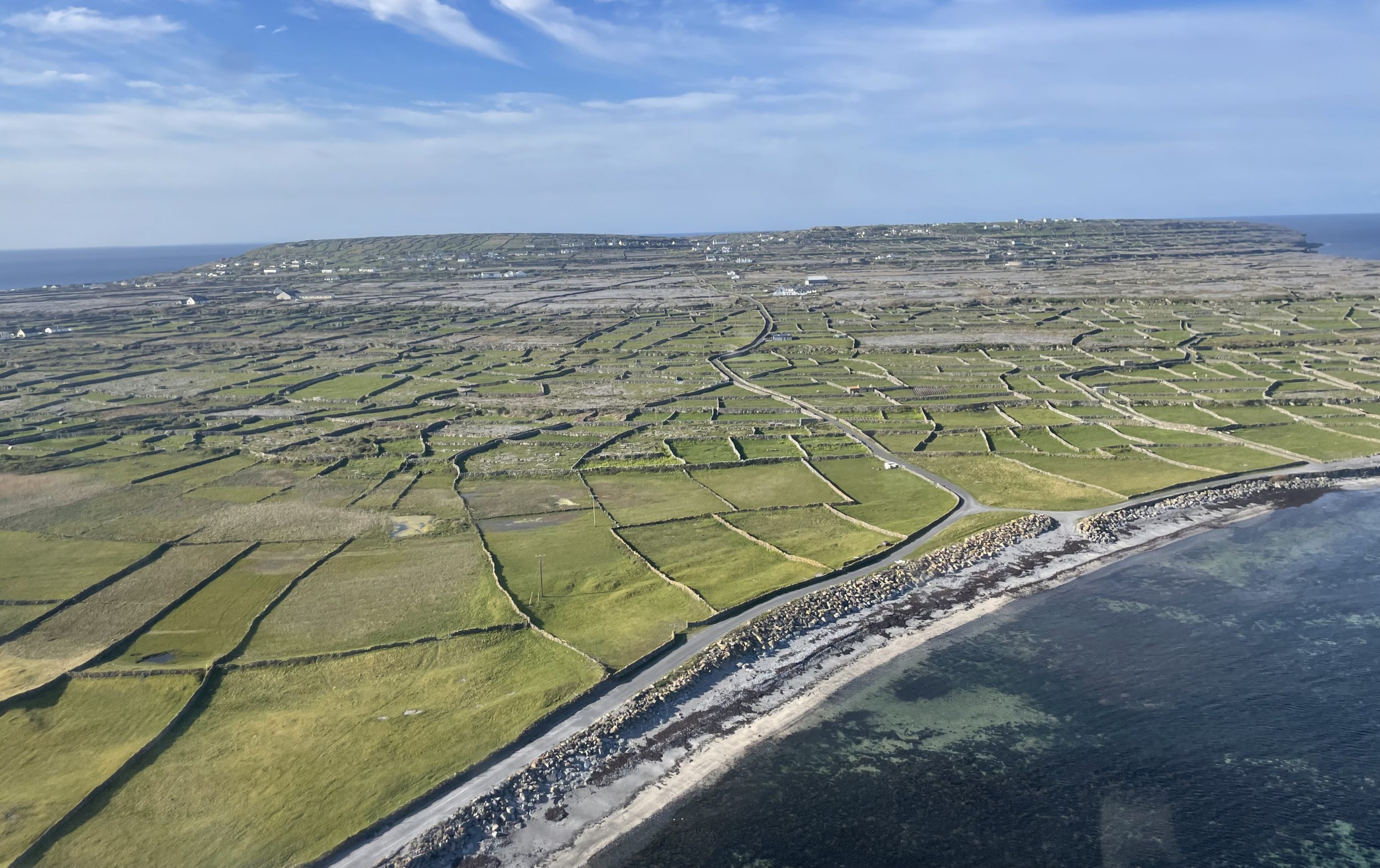
Farm Features
Gnéithe Feirme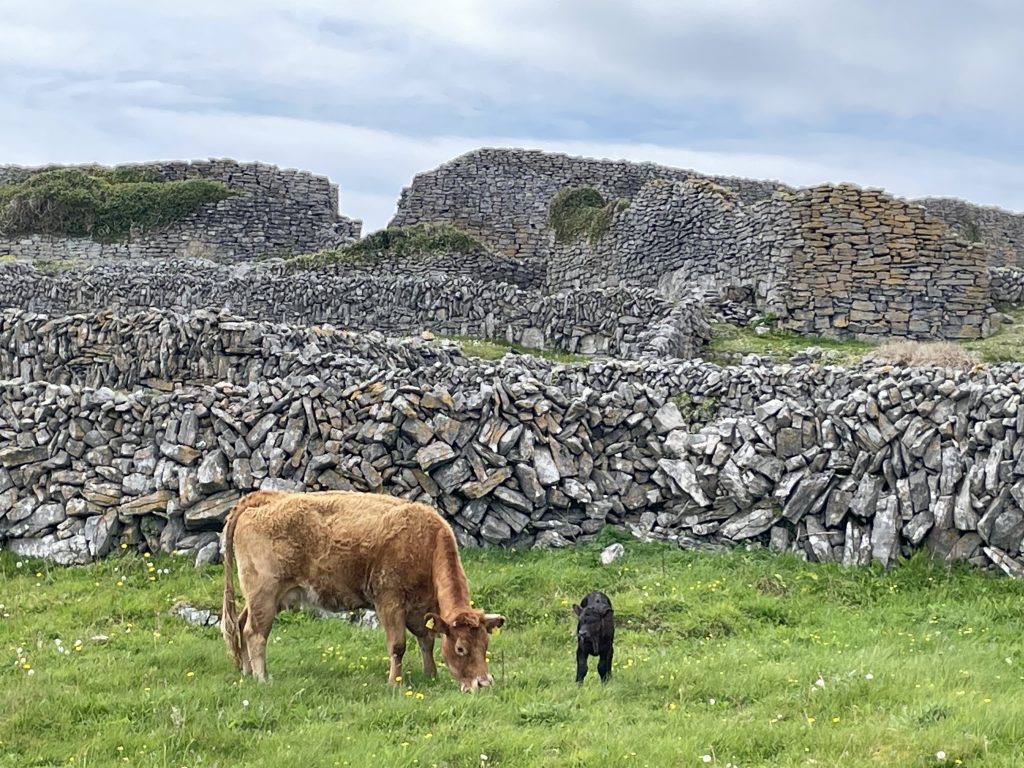 Cattle Husbandry
Beithithe
Cattle Husbandry
Beithithe
Ruairí looks after about 12 cattle of mostly Angus breed. The cattle feed on fertile grass which grows over the karst limestone landscape and can stay outside all year due to the maritime temperate climate.
The female calf pictured is just a few hours old, and had just been brought with its mother Tabasco to the “nursery” – some fields of ours just under Dún Crochúir which are easily accessible to keep an eye on the new calf. Some part of the herd needs to be brought through the small island roads most weeks to a new parcel of fresh grass fields.
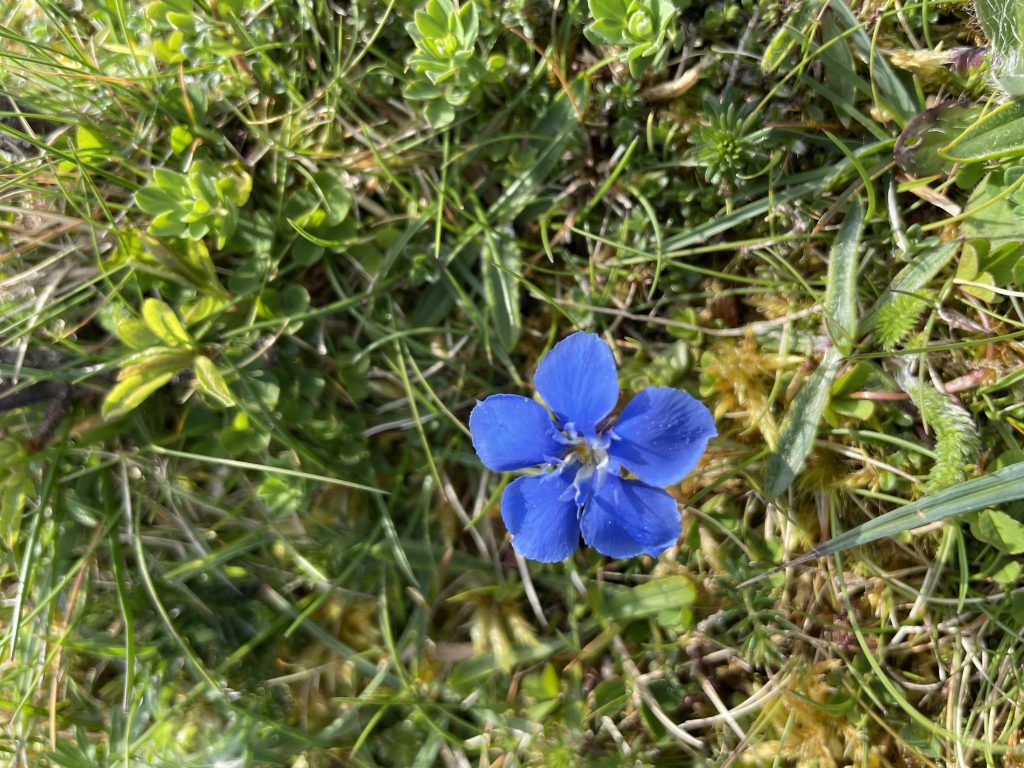 Wild Flowers
Pabhséir Fíon
Wild Flowers
Pabhséir Fíon
Inis Meáin is part of the Burren, a unique karst limestone landscape on the mainland with Unesco Geopark status. The three Aran Islands were originally part of the County Clare Burren before being separated by Galway Bay thousands of years ago. The limestone bedrock and slabs on the island maintain a lot of heat creating a micro-climate for an abundance of wild flowers. These include some rare ones like the Gentian pictured on our Farm here. A botanist’s paradise or a “Jewel in Ireland’s Ecological Crown”, as described in the New Naturalist Book – The Burren.
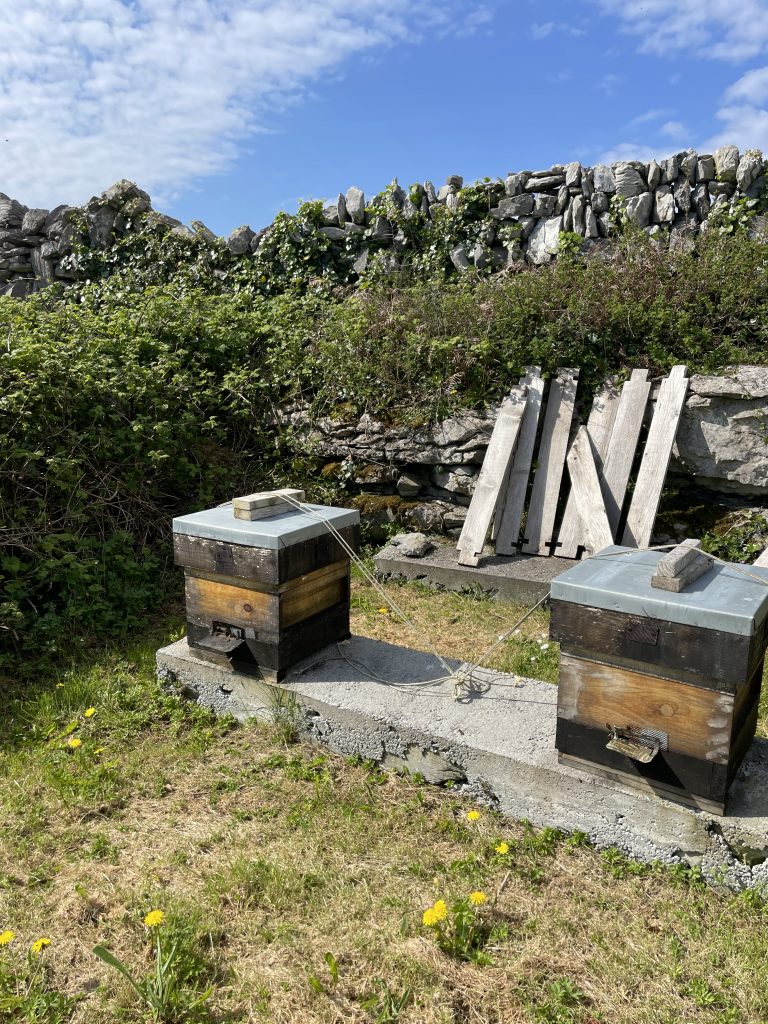 Native Irish Bees
Smeachain
Native Irish Bees
Smeachain
We introduced our first hives to the Farm in 2020, helped by the Connemara Beekeepers Association. They were keen to have Native Irish Bee Hives on the Aran Islands, in protect the species.
Our neighbour Pat, does much of the beekeeping throughout the year, and jarring of the delicious honey in late summer.
We now have 6 hives in 3 different locations on the Farm, with the bees creating bumper honey crops from the abundant wild flowers, and helping to sustain the island’s rich biodiversity.
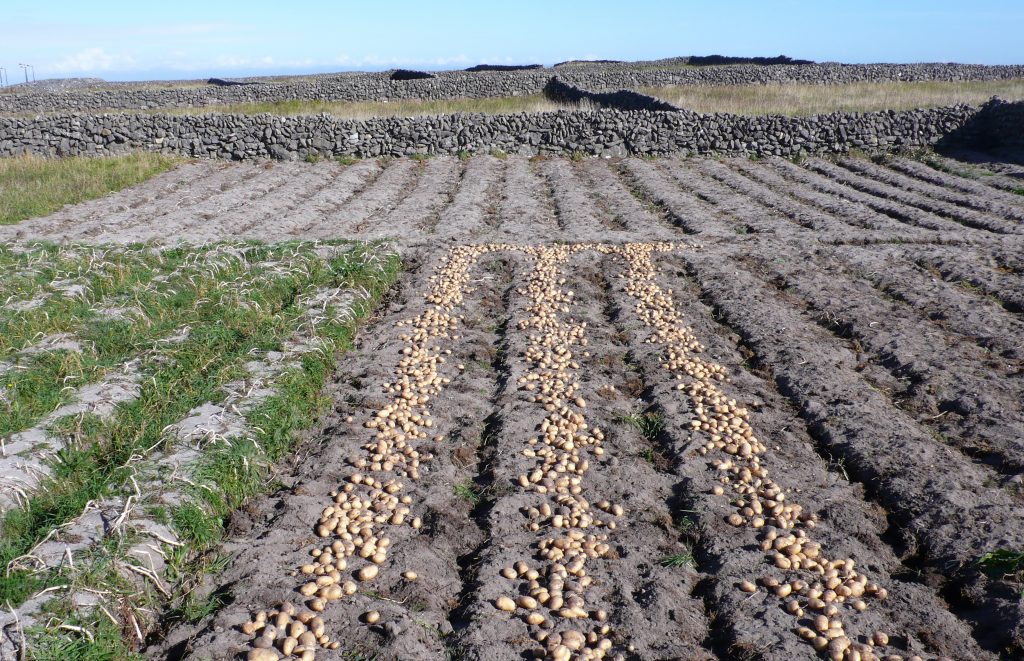 Island Culture
Cultúr na nOileán
Island Culture
Cultúr na nOileán
In our work on the Farm, we are helping to preserve the culture, history and biodiversity of the Island by:
— using traditional farming methods like raised beds and seaweed for potato growing
— maintaining Inis Meáin’s iconic dry-stone walls
— grazing the land so the walls and cultural monuments can be seen and maintained, like Dún Chonchúir, the largest Ring Fort on the 3 Aran Islands, which is mostly surrounded by our fields
—preserving areas for wilding and keeping bees to help support the island’s ecology.


